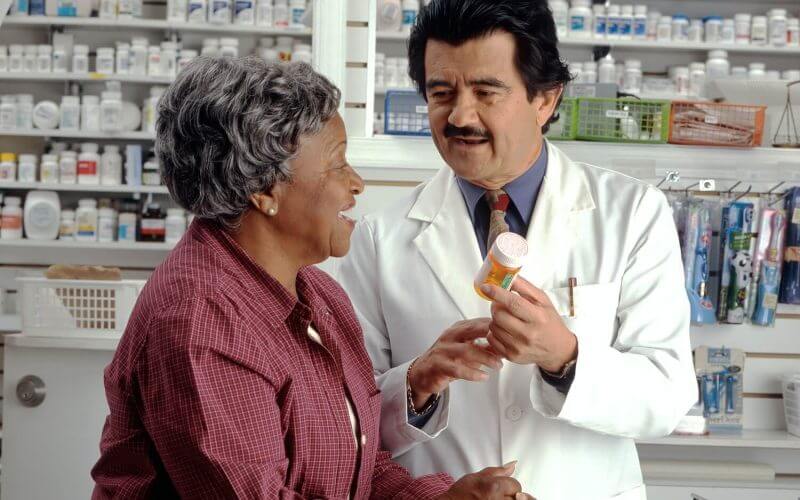Prescription medications are an essential part of managing many health conditions, but they can also be expensive. Fortunately, there are many ways to save money on prescription medications, from shopping around for the best prices to using prescription discount cards like RxGo. In this post, we’ll explore some of the most effective ways to save money on prescription medications.
1. Shop Around for the Best Prices
One of the easiest ways to save money on prescription medications is to shop around for the best prices. Prices for prescription medications can vary widely between different pharmacies, so it pays to do some research before filling your prescription. Use websites like RxGo to compare prices at different pharmacies in your area.
Keep in mind that prices may also vary depending on the dosage and quantity of medication you need. You may find that buying a 90 day supply of medication at once can save you money in the long run.
2. Consider Generics
Generic medications are a great way to save money on prescription medications. Generic medications are equivalent to their brand-name counterparts in terms of safety, quality, and effectiveness, but they are often much less expensive. In fact, according to the FDA, generic medications can be up to 85% less expensive than brand-name medications.
If your healthcare provider prescribes a brand-name medication, ask if a generic equivalent is available. You can also ask your pharmacist if there is a generic version of your medication available.
3. Use Prescription Discount Cards
Prescription discount cards like RxGo can help you save money on prescription medications. These cards offer discounts on the cash price of medications and can be used at thousands of pharmacies across the United States.
To use a prescription discount card, simply present it to your pharmacist when you fill your prescription. The discount will be applied to the cost of your medication. RxGo is a free prescription discount card that can help you save up to 80% on the cost of your prescription medications.
4. Ask About Assistance Programs
Many pharmaceutical companies offer assistance programs that can help you save money on prescription medications. These programs may offer free or discounted medications to people who meet certain eligibility criteria, such as income or medical condition.
To find out if there are assistance programs available for your medication, visit the website of the pharmaceutical company that manufactures your medication. You can also ask your healthcare provider or pharmacist if they know of any assistance programs that may be available to you.
5. Look for Coupons or Rebates
Some pharmaceutical companies offer coupons or rebates for their medications. These coupons or rebates can help you save money on your prescription medications, either by providing a discount at the pharmacy or by providing a rebate after you’ve purchased the medication.
To find out if there are any coupons or rebates available for your medication, check the medication’s packaging or visit the pharmaceutical company’s website.
6. Split Pills
If your medication comes in a higher dosage than you need, you may be able to save money by splitting pills. For example, if your medication comes in a 20 mg dose and you only need a 10 mg dose, you can cut the pill in half and take half the dose.
Keep in mind that not all medications can be split safely. Some medications are time-released or coated, and splitting them can affect their effectiveness or cause them to be released too quickly. Always check with your healthcare provider or pharmacist before splitting pills.
7. Ask About Samples
Pharmaceutical companies often provide free samples of their medications to healthcare providers. If you’re starting a new medication or are having trouble affording your current medication, ask your healthcare provider if they have any samples available.
Keep in mind that samples are usually only available for a limited time, and they may not be enough to cover the full course of your treatment. However, they can be a helpful way to get started on a new medication or to help you bridge the gap until you can afford to fill your prescription.
8. Check Your Insurance Coverage
If you have health insurance, it’s important to check your coverage for prescription medications. Some health insurance plans have high deductibles or copayments for prescription medications, while others may cover the full cost of certain medications.
Make sure you understand your insurance coverage for prescription medications, including any deductibles, copayments, or restrictions on which medications are covered. If you have questions about your coverage, contact your insurance provider or your healthcare provider.
9. Talk to Your Healthcare Provider
If you’re having trouble affording your prescription medications, don’t hesitate to talk to your healthcare provider. Your healthcare provider may be able to suggest lower-cost alternatives or work with you to find ways to manage the cost of your medications.
Keep in mind that your healthcare provider’s primary concern is your health, so they may not always be aware of the cost of medications or the various options for saving money. However, by communicating openly with your healthcare provider, you can work together to find the best treatment plan for you.
10. Don’t Skip Medications
Finally, it’s important not to skip doses or stop taking your medications altogether in order to save money. Skipping medications or stopping treatment early can have serious consequences for your health, and may end up costing you more in the long run.
If you’re having trouble affording your medications, talk to your healthcare provider or pharmacist about your options. By working together, you can find ways to manage the cost of your medications without compromising your health.
Note: The information provided in this article is for educational purposes only and should not be substituted for professional medical advice. Always consult with your healthcare provider for personalized guidance and treatment options.

